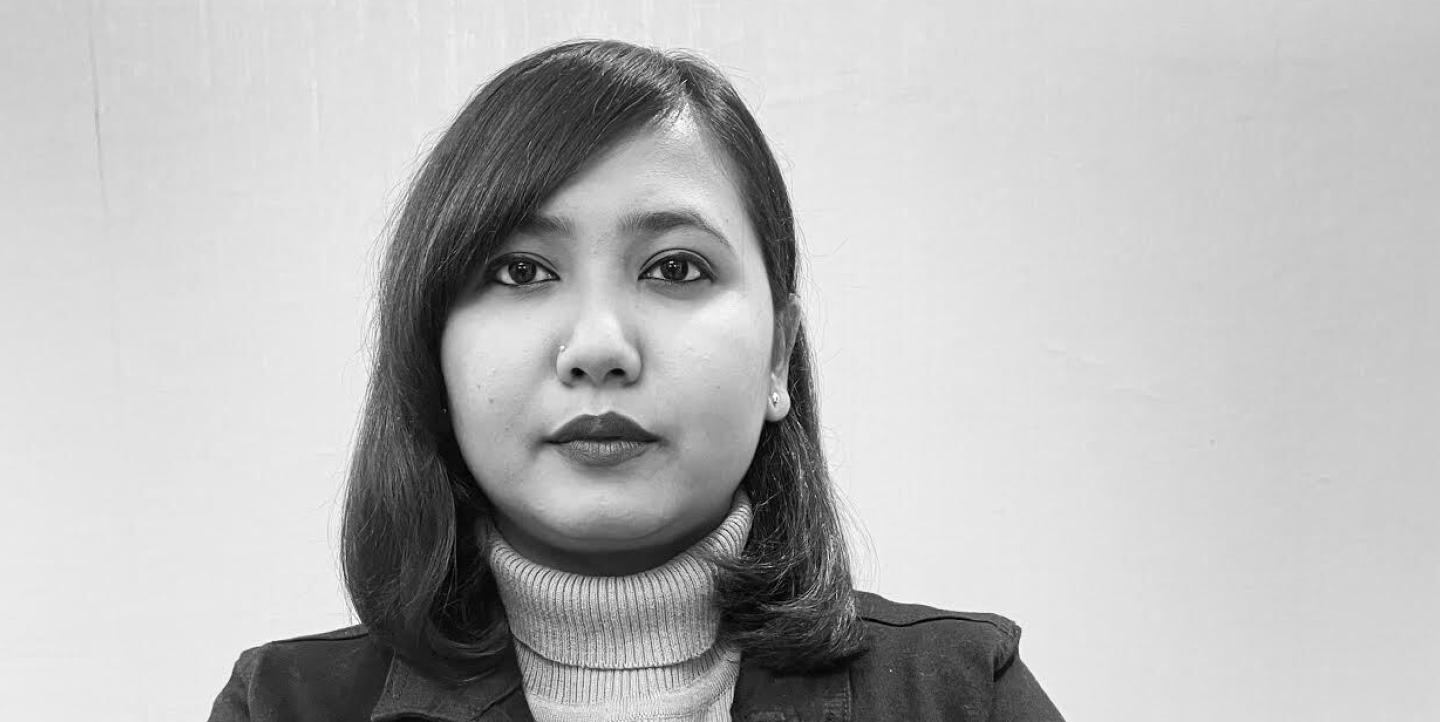When Pari Saikia was 19 years old, recently graduated from university and preparing for her master’s program entrance exam, she received a phone call from her father — a call that redefined her future.
A police officer in the northeastern Indian state of Assam, Saikia’s father had rescued several 13- and 14-year-old girls from child trafficking and bonded labor — an issue not only neglected by the Assamese press, but also little reported throughout India.
Upon meeting the survivors, Saikia was shocked to witness the reality of human trafficking: starved stomachs and young bodies marked by cigarette butt scars. At that moment she decided to be an investigative journalist and reveal the maltreatment suffered by trafficking victims.
Saikia started reporting in home state of Assam, a hotbed for human trafficking, where she investigated trafficking cases while fighting for mainstream media coverage of the issue. She hasn’t stopped since.
Now, Saikia is involved in a cross-border human trafficking investigation under the Modern Slavery Unveiled program funded by Journalismfund.eu. Her work has since been published in Vice World News, The Guardian, and Tehelka, among others. As one of 49 journalists selected for the YouTube Creators Program for Independent Journalists, she is also the creator of India’s first Youtube documentary channel on human trafficking.
What is the importance of reporting on human trafficking?
Ever since I started working, I started investigating my own state. I realized how grave and deep this issue is, that too without any mainstream media reportage and it is without any backup of a public media publication. For mainstream media in India, human trafficking is not even a topic of relevance. It is not a topic of importance because it does not garner advertisement or profit for any organization.
[Human trafficking] is still largely happening, and yet nobody talks about it. It is a day to day problem: picking up women and children for labor work, for drug smuggling. There's more and more of such cases happening right under our nose and nobody is willing to touch that subject.
Nobody wants to cover the stories or follow up the lives of the survivors — what are they doing today? If they are [continued to be] trafficked or not, we don't know. We need to have those stories in the mainstream.
The more you write about the subject, the more attention and support those women, the survivors, will get.
How has IJNet helped further your career as an investigative journalist?
I was initially unaware of the opportunities that journalists have for fellowships, grants, or cross-border programs. However, upon my discovery of IJNet, I learned of applications for international programs that would allow me to conduct human rights investigations with the necessary support, resources, and funding. I came across IJNet’s post for the 'Modern Slavery Unveiled' grant by Journalismfund.eu, which later proved to be an integral step in my investigative career.
How did the Modern Slavery Unvieled grant help you further reveal the exploitation of trafficked people?
As a two time grantee, it has been truly transformative in the way in which I conduct human rights research and cross-border investigations. Most notably, this opportunity has funded my investigations, including travels out of India to parts of Europe.
With increased discoveries of child survivors, I have access to more stories of trafficking atrocities, and have consequently expanded my coverage of the issue. Furthermore, prior to this program I worked solely as an independent journalist, but now, I have a team assignment that allows me to participate in group collaboration — an aspect I deeply value.
As the creator of a first-of-its-kind platform on human trafficking, what inspired your YouTube channel?
I often travel to remote areas of India where I interview survivors to learn their stories. Many of the people I meet speak various Indian dialects, but my pieces are all written and published in English. The consequent language barrier makes my writing inaccessible to local audiences; even those who are featured in my publications can rarely read their own stories.
To address this lack of attainability, I turned towards online social media, as I observed that even in some of the poorest communities, families prioritize having at least one shared cell phone. As a tool capable of reducing divisions over language and connecting people of different regions, YouTube was the ideal platform to improve accessibility and inform the public. However, producing videos and managing a YouTube channel requires a great deal of multimedia training and resources.
Luckily enough, I was selected for the YouTube and Google News Initiative, and received support in launching my channel. I now produce content that educates viewers on human trafficking and provides guidance on how to protect oneself from unsafe situations.
On your documentary channel, you mention that trafficking has worsened from the growth of social media. How so?
Trafficking has shifted away from its traditional, in-the-flesh mode to become a virtually complex issue. Now that its processes and entrapments have transferred to the Dark Web, we cannot feasibly find the traffickers or the victims without professional assistance.
Further complicating the problem, children have become particularly vulnerable because of their increased time spent on the internet, and even adults are lured in through falsely constructed advertisements. To most effectively tackle this issue — and save human lives — government and security officials must collaborate with cybercrime experts and NGOs to tap into the online trafficking system.
What advice do you have for young journalists interested in covering human trafficking?
Media should be sensitive while covering this issue. We are seeing, more and more, that young journalists are not aware of the journalistic code of ethics that they need to adhere to while covering gender, women, children, rape, or trafficking in human rights cases.
I would not have become a responsible journalist without the proper training on how to do investigations and interview sources. It is important to consider the wellbeing of your sources by providing them with space: letting them speak as they wish, and never forcing them when they refuse. These ethical matters are very important.
Photo courtesy of Pari Saikia.


